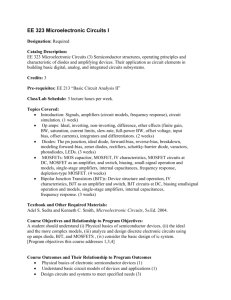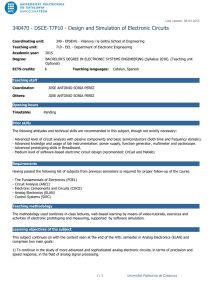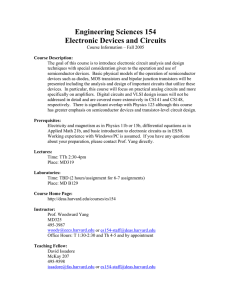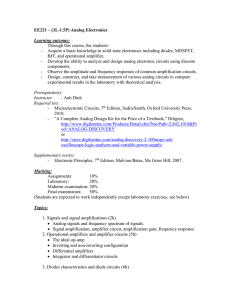Official Course Outline - Department of Electrical Engineering
advertisement
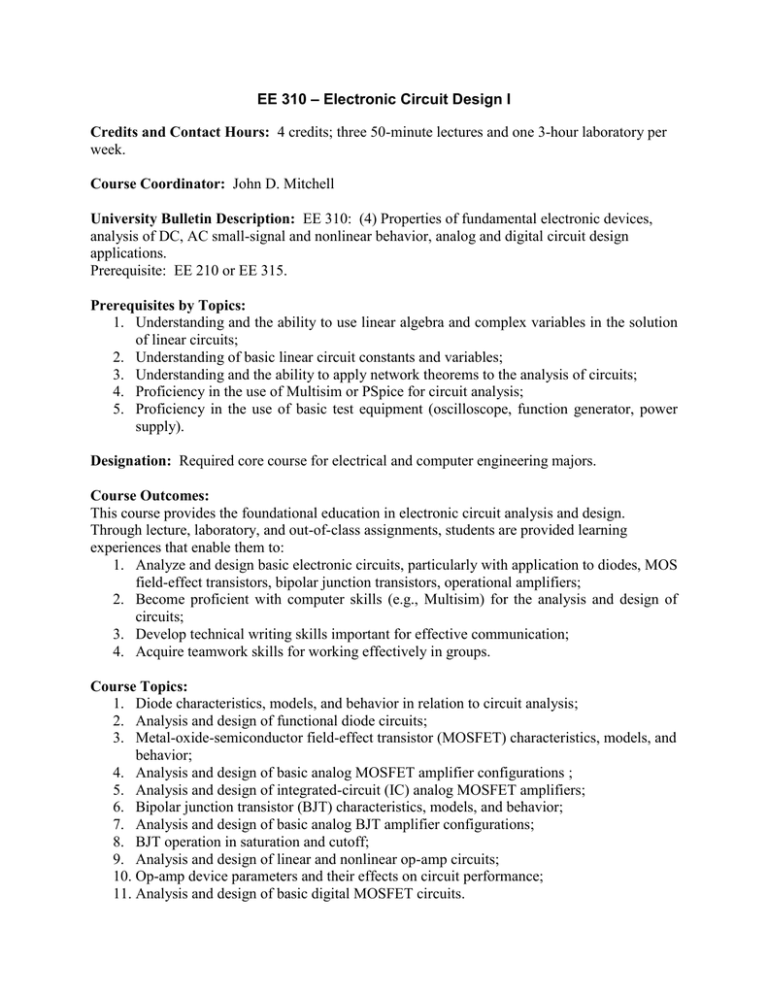
EE 310 – Electronic Circuit Design I Credits and Contact Hours: 4 credits; three 50-minute lectures and one 3-hour laboratory per week. Course Coordinator: John D. Mitchell University Bulletin Description: EE 310: (4) Properties of fundamental electronic devices, analysis of DC, AC small-signal and nonlinear behavior, analog and digital circuit design applications. Prerequisite: EE 210 or EE 315. Prerequisites by Topics: 1. Understanding and the ability to use linear algebra and complex variables in the solution of linear circuits; 2. Understanding of basic linear circuit constants and variables; 3. Understanding and the ability to apply network theorems to the analysis of circuits; 4. Proficiency in the use of Multisim or PSpice for circuit analysis; 5. Proficiency in the use of basic test equipment (oscilloscope, function generator, power supply). Designation: Required core course for electrical and computer engineering majors. Course Outcomes: This course provides the foundational education in electronic circuit analysis and design. Through lecture, laboratory, and out-of-class assignments, students are provided learning experiences that enable them to: 1. Analyze and design basic electronic circuits, particularly with application to diodes, MOS field-effect transistors, bipolar junction transistors, operational amplifiers; 2. Become proficient with computer skills (e.g., Multisim) for the analysis and design of circuits; 3. Develop technical writing skills important for effective communication; 4. Acquire teamwork skills for working effectively in groups. Course Topics: 1. Diode characteristics, models, and behavior in relation to circuit analysis; 2. Analysis and design of functional diode circuits; 3. Metal-oxide-semiconductor field-effect transistor (MOSFET) characteristics, models, and behavior; 4. Analysis and design of basic analog MOSFET amplifier configurations ; 5. Analysis and design of integrated-circuit (IC) analog MOSFET amplifiers; 6. Bipolar junction transistor (BJT) characteristics, models, and behavior; 7. Analysis and design of basic analog BJT amplifier configurations; 8. BJT operation in saturation and cutoff; 9. Analysis and design of linear and nonlinear op-amp circuits; 10. Op-amp device parameters and their effects on circuit performance; 11. Analysis and design of basic digital MOSFET circuits. Student Outcomes Addressed: O.2.1. Graduates will understand how to analyze and design simple electrical/electronic circuits. O.2.2. Graduates will understand electronic devices. Prepared by: John D. Mitchell Date: March 20, 2014

